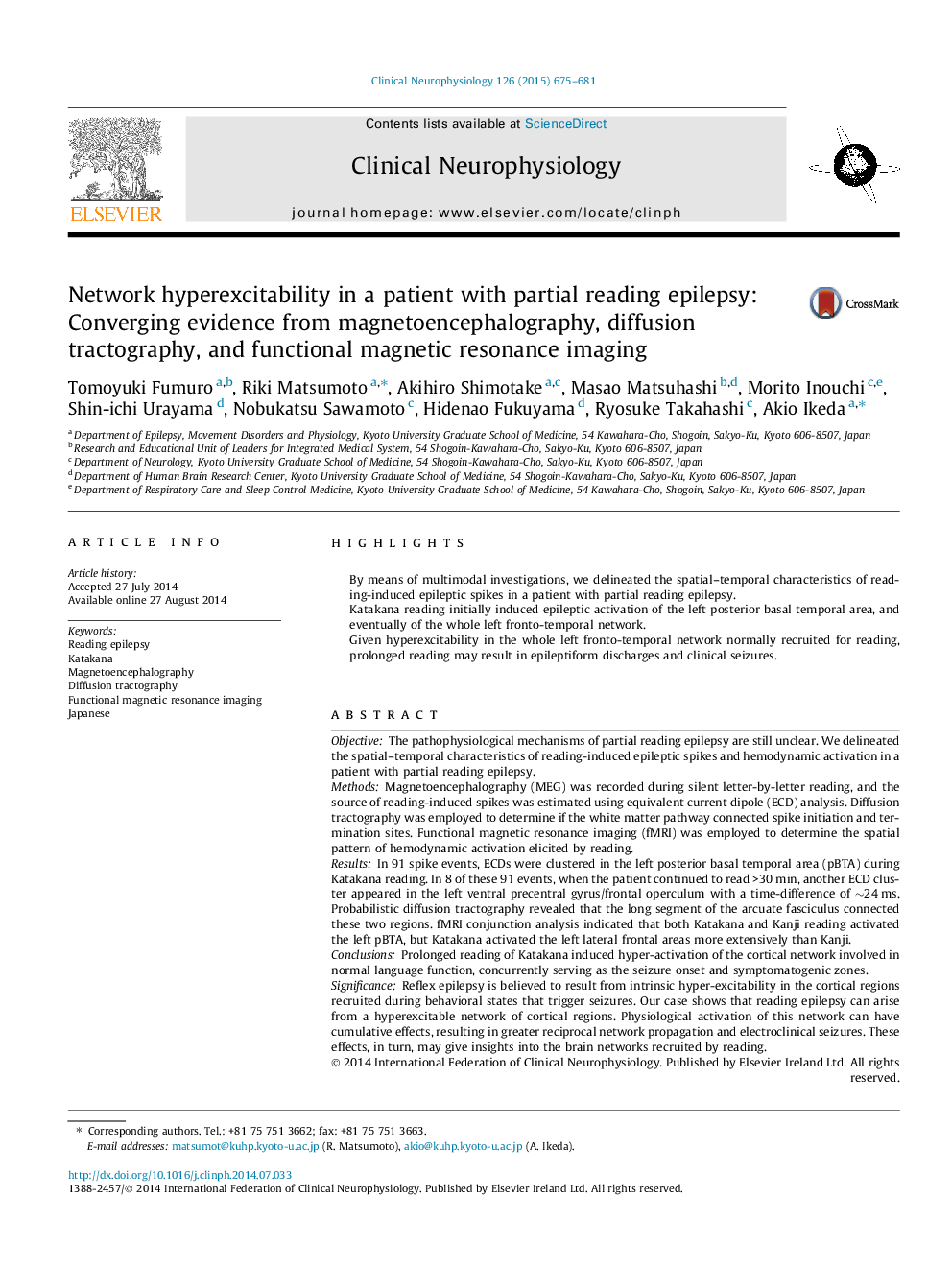| Article ID | Journal | Published Year | Pages | File Type |
|---|---|---|---|---|
| 3042994 | Clinical Neurophysiology | 2015 | 7 Pages |
•By means of multimodal investigations, we delineated the spatial–temporal characteristics of reading-induced epileptic spikes in a patient with partial reading epilepsy.•Katakana reading initially induced epileptic activation of the left posterior basal temporal area, and eventually of the whole left fronto-temporal network.•Given hyperexcitability in the whole left fronto-temporal network normally recruited for reading, prolonged reading may result in epileptiform discharges and clinical seizures.
ObjectiveThe pathophysiological mechanisms of partial reading epilepsy are still unclear. We delineated the spatial–temporal characteristics of reading-induced epileptic spikes and hemodynamic activation in a patient with partial reading epilepsy.MethodsMagnetoencephalography (MEG) was recorded during silent letter-by-letter reading, and the source of reading-induced spikes was estimated using equivalent current dipole (ECD) analysis. Diffusion tractography was employed to determine if the white matter pathway connected spike initiation and termination sites. Functional magnetic resonance imaging (fMRI) was employed to determine the spatial pattern of hemodynamic activation elicited by reading.ResultsIn 91 spike events, ECDs were clustered in the left posterior basal temporal area (pBTA) during Katakana reading. In 8 of these 91 events, when the patient continued to read >30 min, another ECD cluster appeared in the left ventral precentral gyrus/frontal operculum with a time-difference of ∼24 ms. Probabilistic diffusion tractography revealed that the long segment of the arcuate fasciculus connected these two regions. fMRI conjunction analysis indicated that both Katakana and Kanji reading activated the left pBTA, but Katakana activated the left lateral frontal areas more extensively than Kanji.ConclusionsProlonged reading of Katakana induced hyper-activation of the cortical network involved in normal language function, concurrently serving as the seizure onset and symptomatogenic zones.SignificanceReflex epilepsy is believed to result from intrinsic hyper-excitability in the cortical regions recruited during behavioral states that trigger seizures. Our case shows that reading epilepsy can arise from a hyperexcitable network of cortical regions. Physiological activation of this network can have cumulative effects, resulting in greater reciprocal network propagation and electroclinical seizures. These effects, in turn, may give insights into the brain networks recruited by reading.
